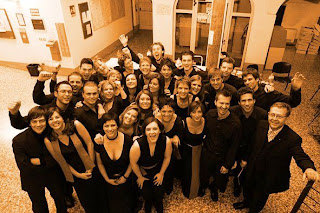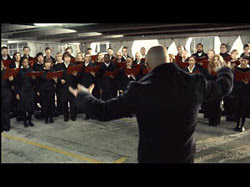 The Choir owes its existence to King Henry VI, who envisaged the daily singing of services in his magnificent chapel. This remains the Choir's raison d'être, and is an important part of the lives of its 16 choristers, who are educated on generous scholarships at King's College School, and the 14 choral scholars and two organ scholars, who study a variety of subjects in the College.
The Choir owes its existence to King Henry VI, who envisaged the daily singing of services in his magnificent chapel. This remains the Choir's raison d'être, and is an important part of the lives of its 16 choristers, who are educated on generous scholarships at King's College School, and the 14 choral scholars and two organ scholars, who study a variety of subjects in the College.Please watch the singer's mouths and see how they move them to project the tones that are lovely and expressive. This is mostly to listen to and watch... just click on the picture above.
This is more like what we would do. You may watch it here. It includes the music for those of you who read so you can follow just how the piece is done.
The song is Coventry Carol and the url is here







 Ralph Lalama is a member of the jazz studies faculty at New York University’s Steinhart School. An accomplished saxophonist and clarinetist, he has performed with the bands of Buddy Rich and Woody Herman.
Ralph Lalama is a member of the jazz studies faculty at New York University’s Steinhart School. An accomplished saxophonist and clarinetist, he has performed with the bands of Buddy Rich and Woody Herman. 









